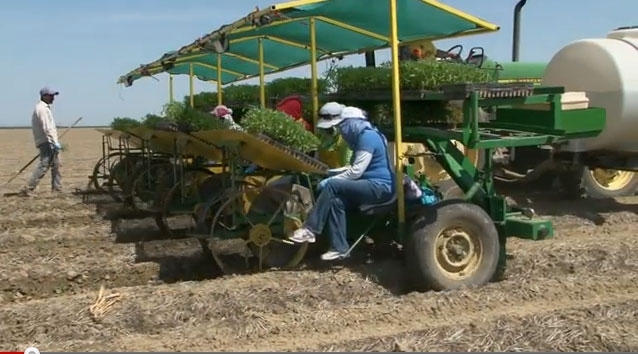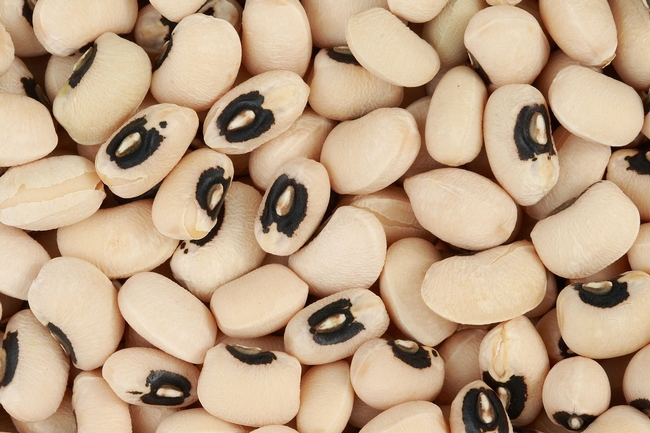Posts Tagged: Karen Klonsky
New UC studies outline costs of producing apples and alfalfa hay
New studies on the cost and return of growing processing apples for juice and cider are available from the University of California Agriculture and Natural Resources Cooperative Extension.
The apple studies focus on production costs on the Central Coast, in the Freedom Region of the Pajaro Valley in Santa Cruz County. One study shows production costs for organically grown apples and the other for conventionally grown apples for processing into juice and cider.
The major differences between the two companion studies are in fertilizer, pest control, yield and farm gate price.
A new cost and return study for growing alfalfa hay under subsurface drip irrigation is also available from UC ANR Cooperative Extension.
The alfalfa hay study focuses on stand establishment and production costs over a six-year stand life using subsurface drip irrigation in the Sacramento Valley and northern Delta.
Each analysis is based upon a hypothetical farm operation using practices common to the region. Input and reviews were provided by consultants, UC ANR Cooperative Extension advisors, growers, pest control advisers, real estate appraisers and other agricultural associates. Assumptions used to identify current costs for individual crops, material inputs, cash and non-cash overhead are described. A ranging analysis table shows profits over a range of prices and yields. Other tables show the monthly cash costs, the costs and returns per acre, hourly equipment costs, and the whole farm annual equipment, investment and business overhead costs.
Sample Costs to Produce Processing Apples, Various Varieties, in the Central Coast-Freedom Region-Pajaro Valley, Santa Cruz County - 2014, Sample Costs to Produce Organic Processing Apples, Various Varieties, in the Central Coast-Freedom Region-Pajaro Valley, Santa Cruz County - 2014, Sample Costs to Establish and Produce Alfalfa Hay in the Sacramento Valley and Northern Delta Using Subsurface Drip Irrigation (SDI)-2014 and other sample production-cost studies for many commodities are available online and can be downloaded from the UC Davis Agriculture & Resource Economics Department website at http://coststudies.ucdavis.edu. Some archived studies are also available at http://coststudies.ucdavis.edu/archived.php.
For additional information or an explanation of the calculations used in these studies contact Karen Klonsky, UC ANR Cooperative Extension specialist in the Department of Agricultural & Resource Economics at UC Davis, at (530) 752-3589 or klonsky@primal.ucdavis.edu, or Don Stewart, staff research associate, at (530) 752-4651 or destewart@ucdavis.edu.
For more than 100 years, University of California Cooperative Extension researchers and educators have been drawing on local expertise to conduct agricultural, environmental, economic, youth development and nutrition research that helps California thrive. UC Cooperative Extension is part of University of California Agriculture and Natural Resources. Learn more at ucanr.edu.
New UC studies outline costs of growing tomatoes under furrow and sub-surface drip irrigation
Two new costs and returns studies for growing transplanted processing tomatoes under furrow irrigation and sub-surface drip irrigation (SDI) in the Sacramento Valley and northern delta are available from the University of California Cooperative Extension.
The studies focus primarily on production costs in the counties of Yolo, Solano, Sacramento and San Joaquin. The two separate studies list estimated production costs for growing transplanted processing tomatoes under furrow irrigation and under sub-surface drip irrigation on 60-inch beds.
The major differences between the two companion studies are inputs related to irrigation and tillage and from yield outcome.
Each analysis is based upon a hypothetical farm operation using practices common to the region. Input and reviews were provided by growers, pest control advisers and other agricultural associates. Assumptions used to identify current costs for individual crops, material inputs, cash and non-cash overhead are described. A ranging analysis table shows profits over a range of prices and yields. Other tables show the monthly cash costs, the costs and returns per acre, hourly equipment costs, and the whole farm annual equipment, investment and business overhead costs.
These two studies –“Sample Costs to Produce Processing Tomatoes, Sub-Surface Drip Irrigated (SDI) in the Sacramento Valley & Northern Delta - 2014” and “Sample Costs to Produce Processing Tomatoes, Furrow Irrigated in the Sacramento Valley & Northern Delta - 2014” – and other sample cost of production studies for many commodities are available and can be downloaded from the Agriculture and Resource Economics Department website, http://coststudies.ucdavis.edu. Some archived studies are also available on the website at http://coststudies.ucdavis.edu/archived.php
For additional information or an explanation of the calculations used in the study contact Karen Klonsky, UC Cooperative Extension specialist in the Department of Agricultural and Resource Economics at UC Davis, at (530) 752-3589, klonsky@primal.ucdavis.edu; or Don Stewart, staff research associate, (530) 752-4651, destewart@ucdavis.edu.
The studies were prepared by Gene Miyao, UCCE advisor, Yolo and Solano Counties; Brenna Aegerter, UCCE advisor, San Joaquin County; Karen Klonsky and Don Stewart.
Roof-top gardens on LA skyscrapers connect people with food
"Chefs are using what's produced (in the garden) in their kitchens because they know their customers appreciate fresh, local food," said Rachel Surls, the sustainable food systems advisor for UC Cooperative Extension in Los Angeles County.
Surls was part of a recent tour of urban agriculture in downtown Los Angeles, a story that was also covered by the LA Times.
The visitors — who included growers, urban policymakers, consultants, entrepreneurs and representatives of nonprofits — wandered around the vegetable beds and asked questions as they got a taste of the garden. The article said the garden, on the fifth floor of a building at 6th and Figueroa streets, cost about $40,000 to build and yields as much as $150,000 worth of produce every year.
Other news:
Drought clouds future of California wine industry
W. Blake Gray, Wine-searcher-com
The California drought didn't impact the wine industry in 2014, but a dry forecast for next year has growers worried. One major issue is the buildup of salts in soils, said Mark Battany, UC Cooperative farm advisor in San Luis Obispo County. During a wet winter, these salts are washed away. But California hasn't had a wet winter in three years. Farmers were able to irrigate at the beginning of the drought to make up the difference, but increasingly water supplies are restricted.
Battany says that excess salt buildup in the soil can cause grapevines to lose their leaves. "Without a way to process sunlight, you won't see sugar ripening," he said.
Showdown looms as California eyes pesticides
Ellen Knickmeyer, Associated Press
Organic farmers are challenging a proposed California pest-management program they say enshrines a pesticide-heavy approach for decades to come, including compulsory spraying of organic crops at the state's discretion.
The farmers are concerned about the California Department of Food and Agriculture's pest-management plan, the article says. The 500-page document lays out its planned responses to the next wave of fruit flies, weevils, beetles, fungus or blight that threatens crops. Many groups challenging the plan complained that it seems to authorize state agriculture officials to launch pesticide treatments without first carrying out the currently standard separate environmental-impact review.
The article reported that the California organic agriculture industry grew by 54 percent between 2009 and 2012. California leads the nation in organic sales, according to statistics tracked by UC Cooperative Extension specialist Karen Klonsky, who says the state is responsible for roughly one-third of a national organic industry.
New UC studies outline costs of producing common dry beans in the Sacramento Valley
Two new cost and returns studies for growing common dry beans, single cropped and double cropped, in the Sacramento Valley are available from the University of California Cooperative Extension.
The studies focus on production costs in the Sacramento Valley -- Colusa, Sacramento, Solano, Sutter, Yolo and Yuba counties. The two different studies show production costs for growing beans under furrow irrigation on 30-inch beds single cropped, including lima (baby, vine and bush types) and blackeye beans; and double cropped, including light and dark red kidney, canario, large white navy, black turtle, cranberry and miscellaneous varieties.
Each analysis is based upon a hypothetical farm operation using practices common to the region. Input and reviews were provided by farm advisors, researchers, growers, farm accountants, pest control advisers, consultants, and other agricultural associates. Assumptions used to identify current costs for individual crops, material inputs, cash and non-cash overhead are described. A ranging analysis table shows profits over a range of prices and yields. Other tables show the monthly cash costs, the costs and returns per acre, hourly equipment costs, and the whole farm annual equipment, investment and business overhead costs.
These two studies - "Sample Costs to Produce Beans-Common Dry Varieties-Double Cropped in the Sacramento Valley" and "Sample Costs to Produce Beans-Common Dry Varieties-Single Cropped in the Sacramento Valley" - and other sample cost of production studies for many commodities can be downloaded from the UC Davis Agricultural and Resource Economics Department website, http://coststudies.ucdavis.edu. Some archived studies are also available on the website.
For additional information or an explanation of the calculations used in the study contact Karen Klonsky at (530) 752-3589, klonsky@primal.ucdavis.edu or Don Stewart, (530) 752-4651, destewart@ucdavis.edu.
The studies were prepared by Rachael Long, UC Cooperative Extension advisor, Sacramento, Solano and Yolo counties; Mark Lundy, UC Cooperative Extension advisor, Colusa, Sutter and Yuba counties; Karen Klonsky, Cooperative Extension specialist, Department of Agricultural and Resource Economics, UC Davis; and Don Stewart, staff research associate, Department of Agriculture and Resource Economics, UC Davis.




